Welcome to the RM Risk Management Blog
This is the area for all things RM news related
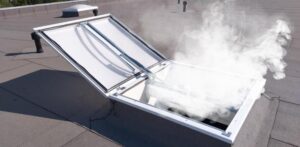
Smoke Vents and the Importance of Regular Maintenance
Smoke ventilation systems are essential in protecting people and property from the harmful effects of a fire, making them an integral part of a building’s fire safety strategy. These systems go by different names, such as smoke control systems or automatic opening vents (AOVs), but their purpose remains the same – to expel smoke, fumes, and heat out of a building in the event of a fire. Given their critical role in fire safety, maintaining these systems correctly is crucial to ensure the safety of a building and its occupants. How do Smoke Vents work? Smoke ventilation systems play a critical role in fire protection for buildings with more than three floors. In such buildings, the primary cause of fatalities during a fire is not the fire itself but smoke, which reduces visibility and makes evacuation challenging for occupants and fire service […]
Read More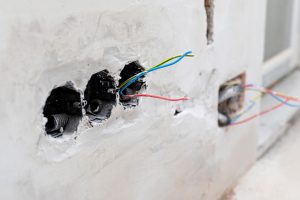
Ensuring Safety: The Importance of Fire Stopping Surveys
In today’s fast-paced world, ensuring the safety and well-being of occupants within commercial and residential buildings is paramount. As a leading UK-based health and safety consultancy, we understand the critical role that fire safety plays in protecting lives and property. That’s why we’re proud to offer comprehensive fire stopping surveys to our clients, providing them with peace of mind and confidence in their fire safety measures. Why Fire Stopping Surveys are Important: Fire stopping surveys are a vital component of fire safety management within buildings. They involve a thorough inspection of fire stopping systems, which are designed to prevent the spread of fire and smoke through concealed spaces such as walls, floors, and ceilings. Over time, these systems can degrade due to factors such as age, improper installation, or building alterations, compromising their effectiveness in the event of a fire. Regular fire stopping surveys help identify deficiencies or damage […]
Read More
A brief overview of Regulation 38
Regulation 38 relates to building work concerning the construction, extension, or change of use of buildings. The person carrying out the work must provide fire safety information to the responsible person no later than the completion date of the work, or the occupation date of the building or extension, whichever comes first. Fire safety information includes details about the building’s design, construction, and the services, fittings, and equipment provided, all of which will help the responsible person operate and maintain the building or extension safely. Other terms, such as relevant building, relevant change of use, and responsible person, are defined in accordance with the Regulatory Reform (Fire Safety) Order 2005. Regulation 38 aims to ensure that the individual in charge of a building possesses enough information related to fire safety to manage the building effectively. The objective of Regulation 38 is to be fulfilled when the building manager has […]
Read More
What is the difference between wet and dry risers?
Many commercial, industrial and non-residential properties rely on wet and dry risers as a critical part of their fire safety procedures, but what is the difference between these two important features? Although both wet and dry risers do similar jobs, they have fundamental differences. Wet risers are designed for buildings that are taller than 50m, and they have a constant supply of water that can be accessed by emergency services during a fire. This is achieved by using water storage tanks and pumps to create enough pressure to provide a water supply that can tackle any outbreak of fire on every floor of a high-rise building. Wet risers can be located inside or outside a building and feature two outlets that are connected to water pipes, which firefighters will then access to tackle a blaze. On the other hand, dry risers are necessary for buildings taller than 18m, and they are not permanently filled with water. Instead, they make […]
Read More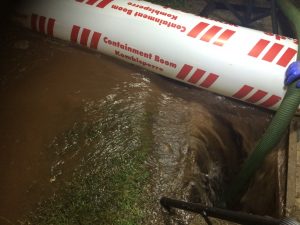
Why Firewater Risk Assessments Could Save Your Business
Have you ever thought about what would happen to your business if it was affected by contaminated firewater? Did you know that as well as causing untold damage to your business and the environment, it could put you at the risk of being fined, or even prosecuted? It’s something to think about. Having a clear strategy in place to mitigate the risks, and to plan your emergency responses in advance may save you the trouble. How risk assessments can help Undertaking risk assessments can help you understand if your current processes are good enough, or if you need to put in place some additional measures to deal with any firewater run-off. You can use this information to develop an effective strategy that works for you. You should consider the following: products you store on-site that could become damaged by firewater; the amount of water you think would be needed […]
Read More
Fire Door Inspection: Why Choose RM Risk Management?
Choosing a risk management firm isn’t easy, is it? In fact, the task is made harder simply because risk management is so easily misunderstood. Take fire door inspection, for instance. Do you really need an ongoing partnership with a risk management firm to keep on top of something like that? As it turns out, you do. The benefits of HASAD If you ask RM Risk Management to carry out a fire door inspection, you’ll gain free access to the Health And Safety Advisory Database (otherwise known as HASAD). It’s actually a year’s free license to HASAD, which includes an online repository for your health and safety documentation, the ability to view KPIs on risk status and use interactive reports to monitor your company’s HSE performance. However, before this, we’ll even provide a free one hour’s check of your fire doors to give you an indication of where you […]
Read More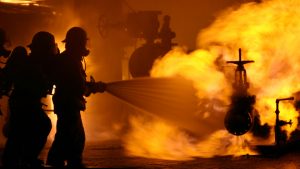
Health & Safety Risk Assessment: As Important as Fire Risk Assessment?
The horrific Grenfell Tower incident in 2017 ushered in a new, intense focus on fire safety. This is absolutely essential, but it has inadvertently resulted in some property managers overlooking the rest of their health and safety duties on site. Assessment of fire safety shouldn’t detract from the importance of conducting regular General Health & Safety Risk Assessment and inspections. For instance, when a guest at the White Hart Hotel in Upton-upon-Severn tragically fell to their death from an open window in 2015, subsequent investigations discovered that low-cost alterations to the window height could have prevented their death. Overlooking risks with low probability but high severity can lead to dire consequences. So, today, we’ll reveal why general health and safety and fire risk assessment checks, are so important. The fire safety law Fire safety should never be ignored, but the same goes for general health and safety. It’s why […]
Read More
Low Occupancy Property – Water Hygiene Audit
A guide to making a commercial property’s water system safe, during periods of low occupancy It’s likely to be in breach of law to simply occupy a building that’s operating at low occupancy or has stood idle. Building Managers need to conduct a Low Occupancy Property – Water Hygiene Audit and recommission their water systems. To read HSE guidance on what you must do, click here. Alternatively, read our guide below. Why is it so important to audit water hygiene, at times of low occupancy? Because Legionella bacteria may now be lurking in water systems! It’s vital that we audit water systems now because water usage has been so significantly reduced in commercial properties. And in addition to Legionella risk, drinking water retained within buildings may no longer be potable following a period of prolonged stagnation. If duty-holders haven’t put a proper recommissioning process in place for their […]
Read More
Making a property’s water system safe post lockdown
A guide to recommissioning water systems in commercial properties It is unacceptable and likely to be in breach of law, to simply re-open a building that has stood idle, without recommissioning its water system. As the focus is on signage & sanitation right now, making a property’s water system safe post lockdown is something that many property managers are overlooking. To read HSE guidance on what you must do, click here. Alternatively, feel free to read our guide to recommissioning water systems in commercial properties, below. Why is it so important to assess water hygiene, at this time? Because Legionella bacteria may now be lurking in water systems! It is vital that we assess water systems now because water usage has been so significantly reduced in commercial properties during lockdown. And in addition to Legionella risk, drinking water retained within buildings may no longer be potable following a period of […]
Read More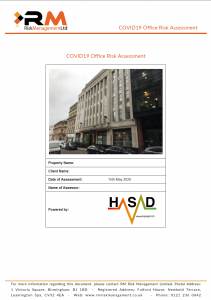
Outsource your COVID-19 Risk Assessment here
COVID-19 Risk Assessments can be a daunting prospect for many companies. Outsource your COVID-19 Risk Assessment here with RM’s new COVID-19 Risk Assessment Service. The COVID-19 Risk Assessment is the first of 5 steps to working safely that the UK government expects duty holders to complete before restarting work, following the Coronavirus outbreak. Since May 2020, property managers from across the UK have approached RM to outsource their COVID-19 risk assessments. As a result, in the past 4 weeks, RM has conducted over 125 COVID-19 Risk Assessments for Offices, Shops, Cafes, Retail Parks, Industrial Estates and Shopping Centres. RM’s new ‘Return to Work’ COVID-19 Risk Assessment Service is the perfect solution for businesses that want to outsource their COVID-19 risk assessment to a third party consultancy. It is based upon the latest UK government guidance covering Office and Contact Centres & Shops and Branches. Key areas covered: The key areas […]
Read More